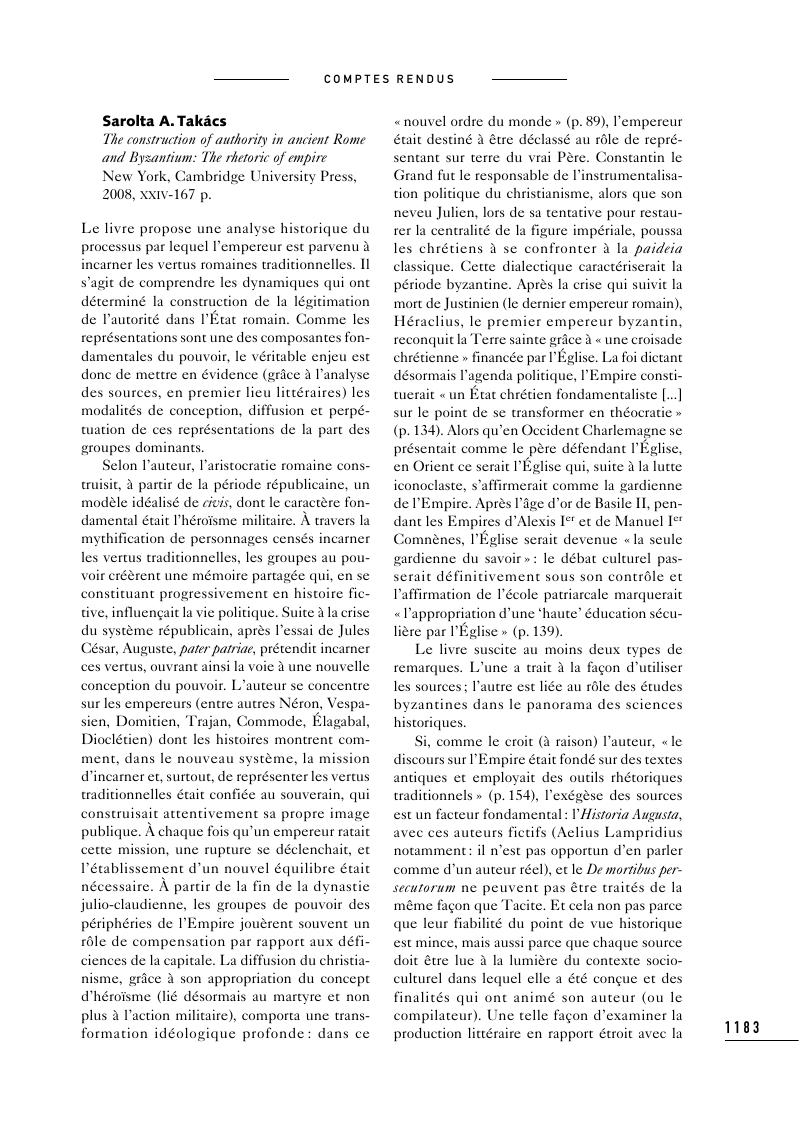No CrossRef data available.
Published online by Cambridge University Press: 04 May 2017

1- Odorico, Paolo, « Displaying la litterature byzantine », in Jeffreys, E., Haarer, F. K. et Gilliland, J. (éd.), Proceedings of the 21st international congress of Byzantine studies, London, 21-26 August, 2006., Aldershot, Ashgate Publishing, 2006, vol. I, p. 213–233.Google Scholar
2- Magdalino, Paul, The empire of Manuel I Komnenos, 1143-1180., Cambridge, Cambridge University Press, 1997, p. 328.Google Scholar
3- Laiou, Angeliki E., « The Byzantine economy: An overview », in Laiou, A. E. (éd.), The economic history of Byzantium: From the seventh through the fifteenth century., Washington, The Dumbarton Oaks Research Library and Collection, 2002, vol. III, p. 1121–1140 Google Scholar ; Marie-France Auzépy, L’histoire des iconoclastes, Paris, Association des amis du Centre d’histoire et civilisation de Byzance, 2007.
4- Magdalino, Paul, « The distance of the past in early medieval Byzantium (VII-X centuries) », in Ideologie e pratiche nel riempiego nell’alto Medioevo., Spolète, CISAM, 1999, vol. I, p. 115–146 Google Scholar.